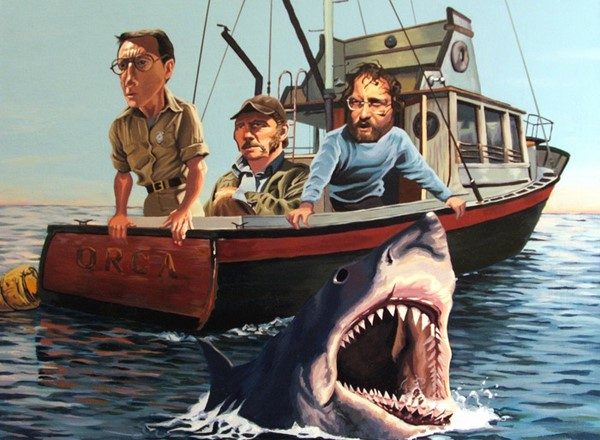Midweek we enjoyed a double feature of horror films from the 1930s. The classic “Bride of Frankenstein”, and the lesser known but very stylish “Dracula’s Daughter”. It’s been less than 18 months since I saw the Bride of Frankenstein in a theater. Back in 2022 I saw The Bride with “The Mummy” in a Fathom event and I wrote about it then and you can read about it here.
The “Bride of Frankenstein” is one of the most stylish films from the 1930s. Filled with what might be described as German expressionism, the lighting and shadows are dramatic and exactly the kind of thing that foreshadows film noir coming in the next decade. Of course there are also the over-the-top performances of Dr Frankenstein and Doctor Septimus Pretorius. The one actor who clearly outshines everyone in the film continues to be Boris Karloff. Although he was against it, this version of the monster developed some language skills, and it helps the story take on some even greater moral dilemmas.
Where is Henry Frankenstein stitched together body parts of the Dead and used electricity to try and bring them back to life, Dr. Pretorius seems to have been using recombinant DNA to achieve his goal, and this is well before the concept of DNA was understood. He appears to have been using cloning and some kind of genetic Magic to produce his set of miniature living beings. That sequence is mostly used for humor, but it does set up the idea that they’re going to grow a body around a bone structure as opposed to trying to assemble one from body parts of others. Of course the one exception as they get close to creating the bride, comes when they have to have a fresh heart. Now we’re not dealing with grave robbers but murderers.
The Bride of Frankenstein does continue to raise the question of man’s control over life and death, and whether we are crossing a Rubicon by trying to create life. The film is all the better for the prologue that features Byron and Shelly and Mary Wollstonecraft Shelly telling the stories on a dark and stormy night. Byron in particular is portrayed as a romantic in a very theatrical way, which sets up the rest of the story very effectively.
“The Bride of Frankenstein” relies on a variety of special photographic effects, miniatures, and production design that creates a Gothic image in a faraway place to give us the creeps. “Dracula’s Daughter” is much more sparse in its use of any special effects. They are one or two moments where the process of hypnosis is visualized using some photographic techniques, but when they get to Dracula’s castle it’s a very basic sequence that is not drawing attention to itself the way the exploding Laboratory at the end of the “Bride of Frankenstein” was doing.
I know I saw this movie two or three times as a kid, but I remembered only a few particular moments. I remembered the ring the Countess Zeleska uses to hypnotize and subdue her victims. I remembered the creepy familiar, Sandor, with his pasty face greased down hair and deep set eyes. He looked like a vampire well before being given eternal life. I also remembered the sequence where the Countess is testing herself with a girl she acquires as a model. When the young woman takes off her blouse and drops down the straps on her chemise, there is a moment of desire that overcomes the Countess, and that largely accounts for the films Sapphic reputation.
The film is atmospheric and has some nice visuals, but it feels like a very straightforward drama with a few horror elements added. The opening and closing of the coffin at the count is sleeps in, and the wrap that she cloaks herself in, revealing only her eyes are as close to transforming into a bat or revealing fangs that we are going to get. We never even see the puncture wounds that doctors refer to on the victims. So everything is played very subtly. Of course that’s part of the story The Countess thinks now that Count Dracula is gone, that the spell she is under is broken and it is only her mental state that forces her into continuing to live the nocturnal vampire existence. Thus her interest in the mealy mouth psychiatrist/doctor that she begins to consult and ultimately decides that she wishes to make her Eternal mate.
I had completely forgotten that Van Helsing appears in the film, and that the reason the doctor is involved in the story in the first place is to help his former mentor escape conviction for murdering Count Dracula. The chief of Scotland Yard is portrayed as barely competent, and completely skeptical, but surprisingly accommodating to both Van Helsing and his young former pupil.
There are no big action scenes, we don’t get a stake through the heart, at least not on screen. The Countess is betrayed by her familiar rather than the hero. And the vampire doesn’t melt in the sunlight at the last minute. The movie ends with very little in the way of dramatic climax, and although we’re supposed to have some sympathy for countess Zaleska, we’re mostly left with a feeling of sadness for everybody involved. For a movie with very limited horror effects it manages to have the desired outcome on our emotions. A a very worthwhile sequel to the original Dracula.

.jpg)
.jpg)